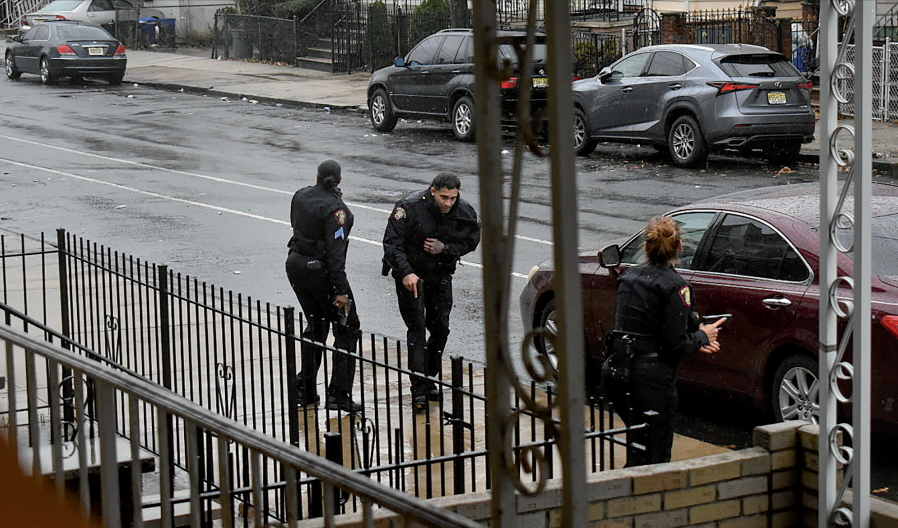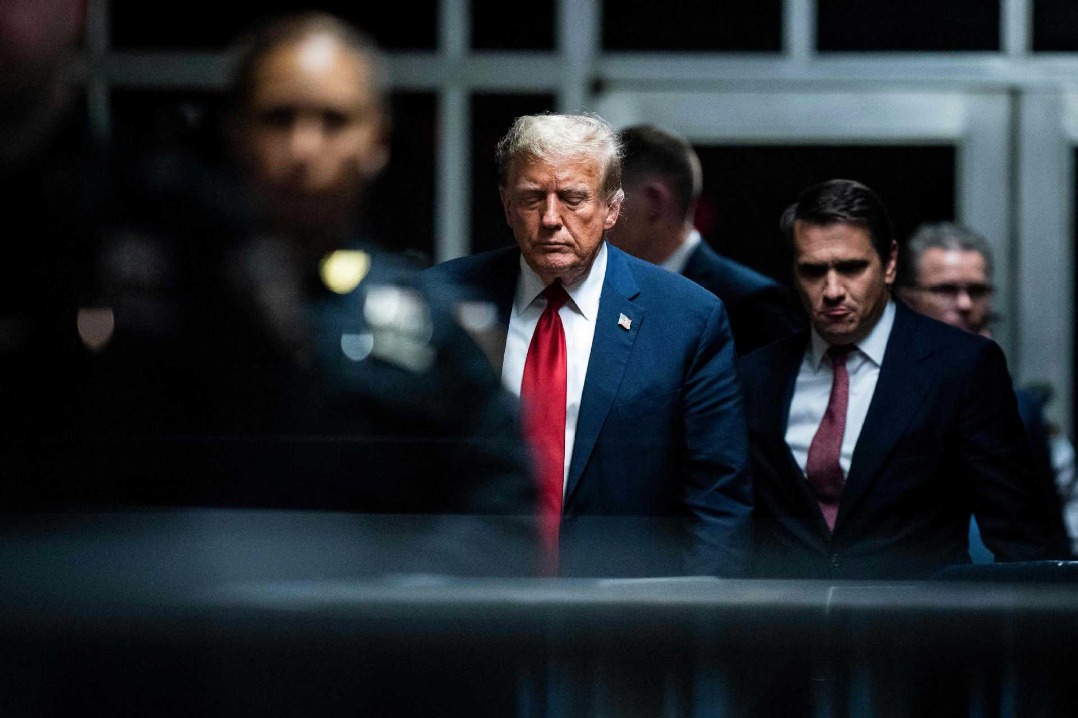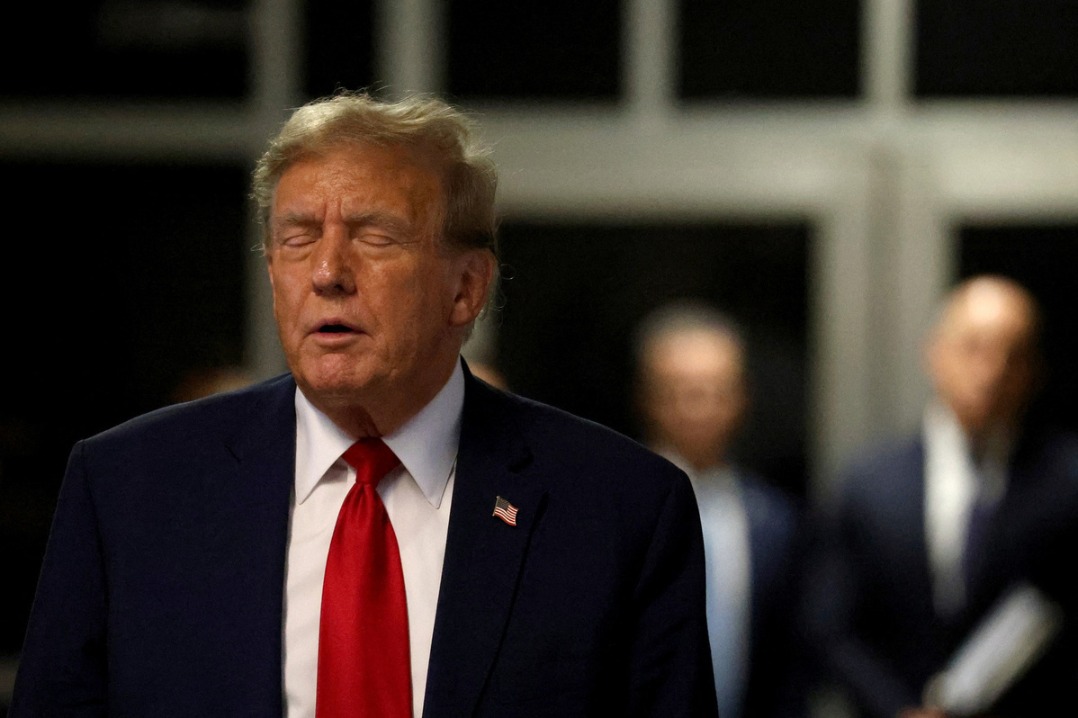Advocates work to reduce gun violence in US
By LIU YINMENG in Los Angeles | China Daily Global | Updated: 2020-01-09 23:56

Less than 24 hours into the new year, the United States experienced at least three mass shootings.
The first one took place on New Year's Eve when four people were shot outside a busy night club in Cleveland. Less than two hours later, shots rang out at a hookah bar in West Virginia, injuring seven people. By morning, police were investigating five shooting deaths in St. Louis, Missouri.
"I'm shocked but not surprised, in part because mass killings have been trending upward for a few years, and in the absence of clear and decisive action to prevent what are very often preventable tragedies from occurring, they can and will only trend upward," said James Densley, professor of criminal justice at Metropolitan State University in Minnesota.
Americans said goodbye to a year that saw an unprecedented number of mass killings, but several cities in the US began 2020 combating rising murder rates, calling attention to a gun-violence crisis that has resulted in high number of casualties and polarizing debates in the country.
According to Gun Violence Archive, a nonprofit that tracks gun violence across the country, 15,597 people were killed and 29,590 were injured in 2019.
Mass shootings in the past year totaled 417 cases, the highest number in a single year since the organization started keeping track in 2013.
The nonprofit defines mass shooting as a single incident in which four or more people are shot and/or killed at the same general time and location, excluding the perpetrator.
The data paints a grim picture: there were more mass shootings in 2019 than the number of days in the year.
As the new year began, the death toll started rising. As of Jan 5, the organization had tracked five mass shootings and 479 deaths across the nation.
As devastating as mass shootings are, they reflect a fraction of the overall picture. In 2018, for example, there were 55,273 gun-related incidents (which include suicides, unintentional shootings and officer-involved shootings), and 337 cases among those were mass shootings.
The prevalence of guns in the US is a major contributor to the high number of gun deaths. In 2017, there were an estimated 120.5 civilian-owned firearms per 100 residents, according to Small Arms Survey.
Yemen, which is in the midst of a civil war, trailed the US with 52.8 guns per 100 residents.
Eighty-one percent of mass shootings involve the use of at least one handgun, and 60 percent involve only handguns, according to gun control advocacy organization Everytown for Gun Safety Support Fund.
Those that involve assault weapons — semi-automatic firearms that fire rounds at greater velocity than most other firearms — or high-capacity magazines, resulted in far more deaths and injuries.
Mass shootings with an assault weapon accounted for 32 percent of all mass shootings deaths and 82 percent of injuries between 2009 and 2018.
While the spate of mass shootings continues to raise alarm, Congress is at a standstill on passing solutions to the gun crisis.
In February, the House passed the Bipartisan Background Checks Act requiring a background check for every firearm sale. But it's being held up in the Republican-controlled Senate.
In December, lawmakers reached an agreement on a spending bill that would allocate $25 million of federal money for the study of gun violence. The money will be split evenly between the National Institutes of Health (NIH) and Centers for Disease Control and Prevention (CDC). The move marked the first time in more than 20 years that Congress has appropriated money for gun-violence research.
Since Congress reconvened this month, 110 bills have been introduced, from enacting stronger background checks to banning semiautomatic assault-style rifles, but little progress has been made because Senate Majority Leader Mitch McConnell hasn't put the measures up for a vote.
He has said that he will only hold votes on measures when President Donald Trump outlines what he will support. Trump, on the other hand, at first vowed to support more restrictive gun laws, but later reportedly went silent after conversations with gun supporters.
"Many of the legislators are supported by the gun lobby; they are in the business of producing, manufacturing and profiting from the sales of firearms, and that's (the) priority," said Erroll G. Southers, professor of national and homeland security at the University of Southern California, who is also a former FBI special agent.
Densley called the passage of the gun-violence research funding bill "a positive step" because it allows the CDC and NIH to research gun violence as a public health issue, not simply a criminal justice issue.
He warned that Americans are increasingly becoming more comfortable with a "gun culture".
"It's a feedback loop fed in part by public fear and fascination. The more we talk about mass killings, the more they are in the public's consciousness and become part of everyday life and conversation, the more likely they are to happen," Densley said.
"It works a lot like suicide contagion. At the same time, too many Americans feel angry and alienated from the American Dream. Until we address their underlying grievances, people will continue to lash out violently," he added.
Densley, along with Hamline University professor Jillian Peterson and a team of students, has put together a national shooter database to study mass shooters and unlock ways to prevent the shootings from happening.
The group found many common traits among mass shooters; for example, many have experienced early childhood trauma, but opportunities for intervention are often missed, Densley said.
Early intervention through school-based services may be a key component of early prevention, he explained.
Mass shooters also tend to study past shootings to find inspiration, so to prevent further carnage from happening, aggressive monitoring of the internet is necessary to deploy countervailing messaging and disrupt groups that promote violence, Densley said.
Southers has several recommendations. One is to enact extreme risk protection orders. These laws would allow families and law enforcement officers who notice warning signs that shooters are at risk of harming themselves and/or others, to temporarily remove a person's access to firearms.
He also recommended universal background checks and mandatory firearm-safety training.
"Twenty-six states out of 50 in the US permit (residents) to carry a concealed weapon; you never have to show that you know how to fire that weapon," Southers said.
"So imagine that in 26 states in the country, you can get a license to drive a car, and never show them that you have to know how to drive it. That's how it is with firearms, in over half of the states there's no requirement to demonstrate that you know how to fire that weapon," he added.
"We are not going to go out through this country and take people's firearms away, that's just not going to happen. But there are a lot of other things that we can do to reduce the risk of gun violence," Southers said.
























